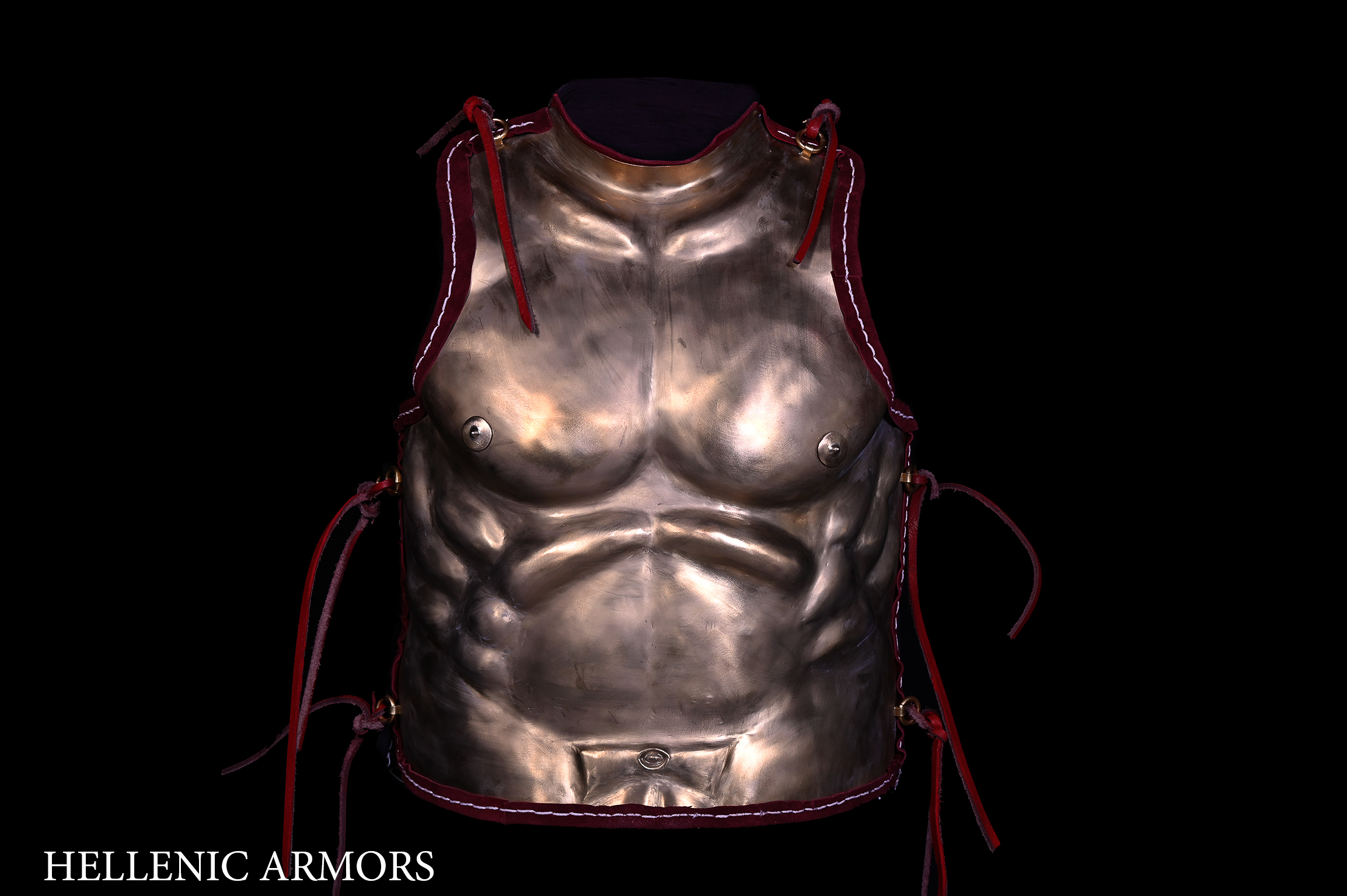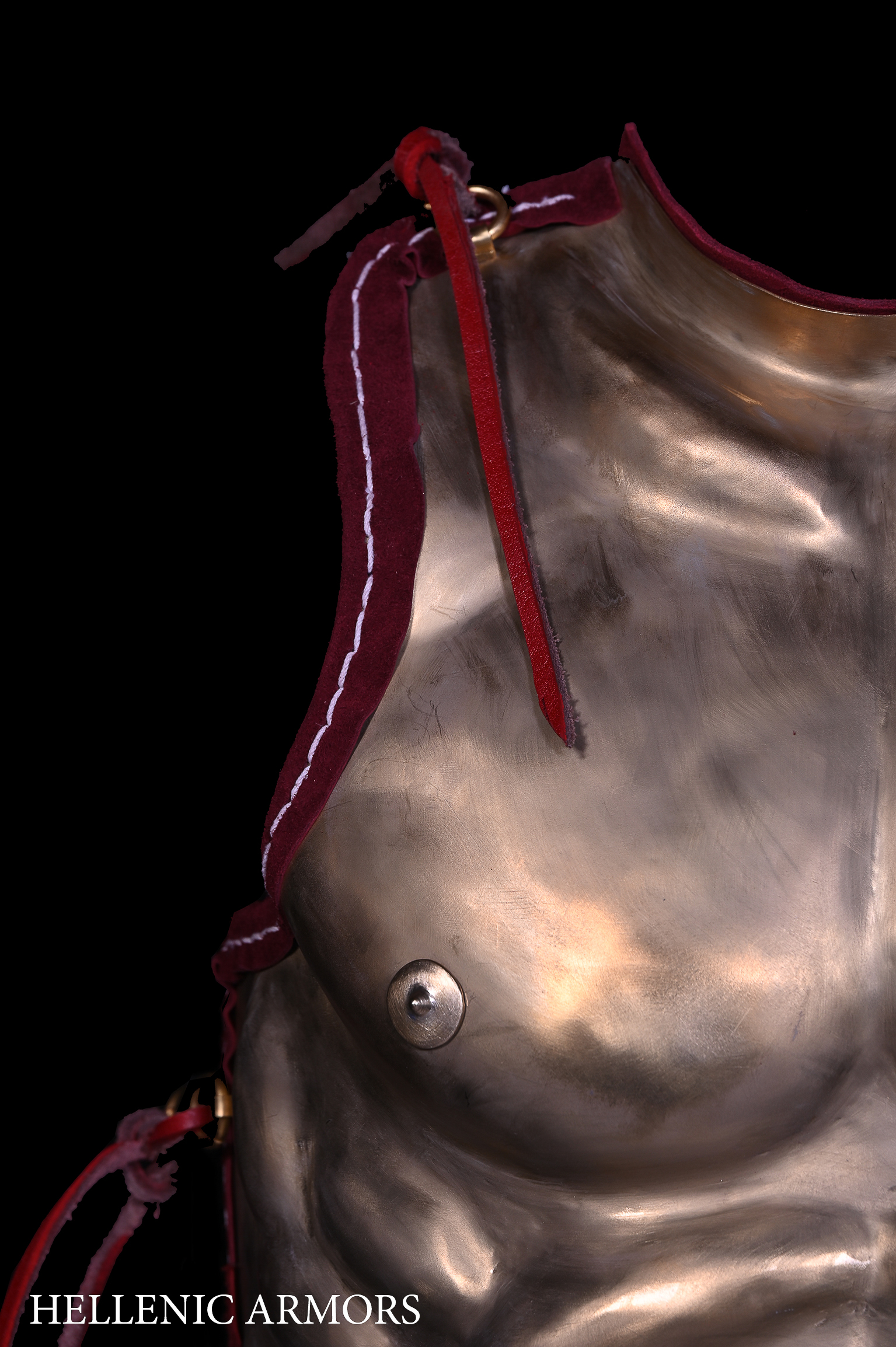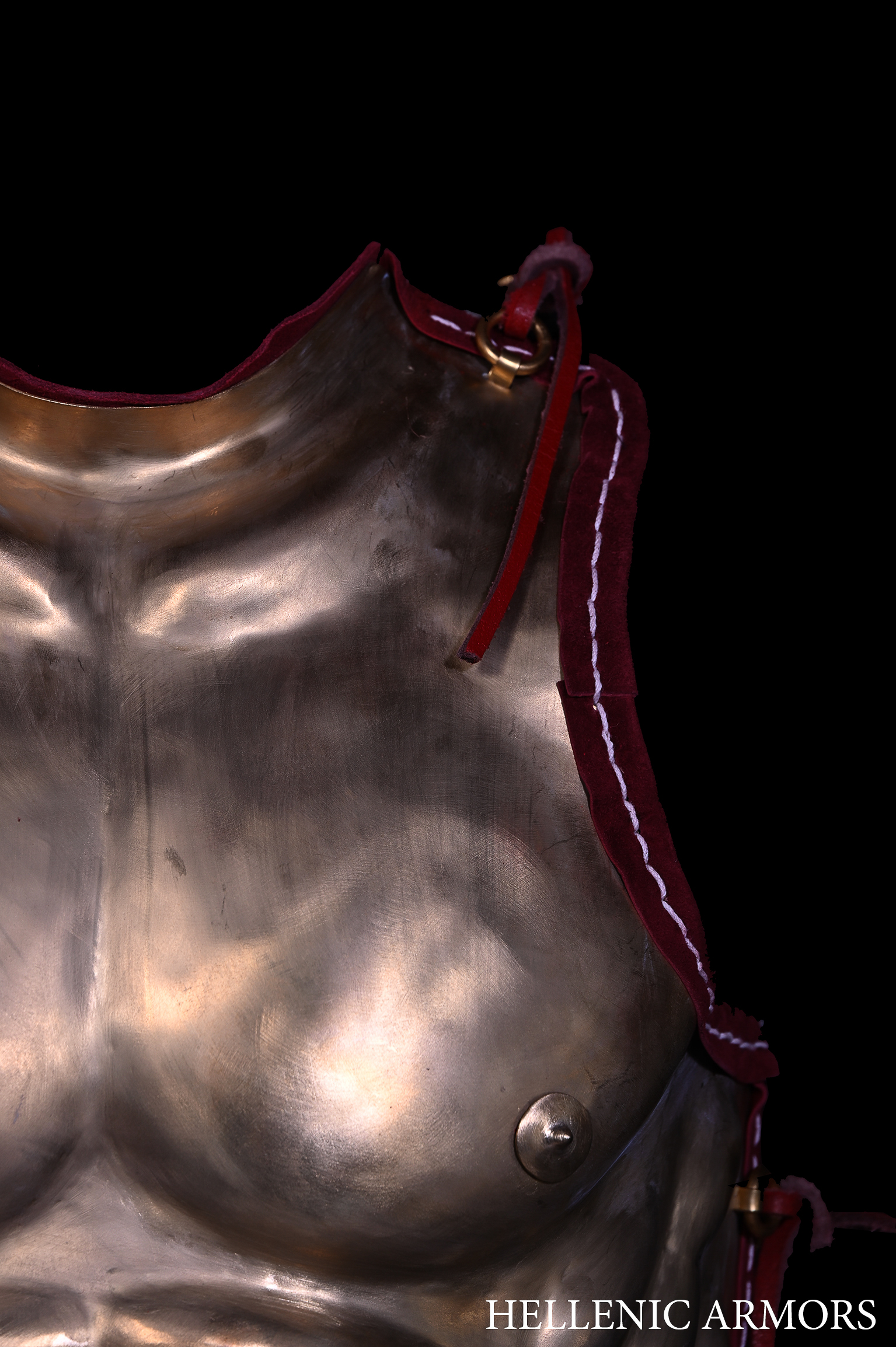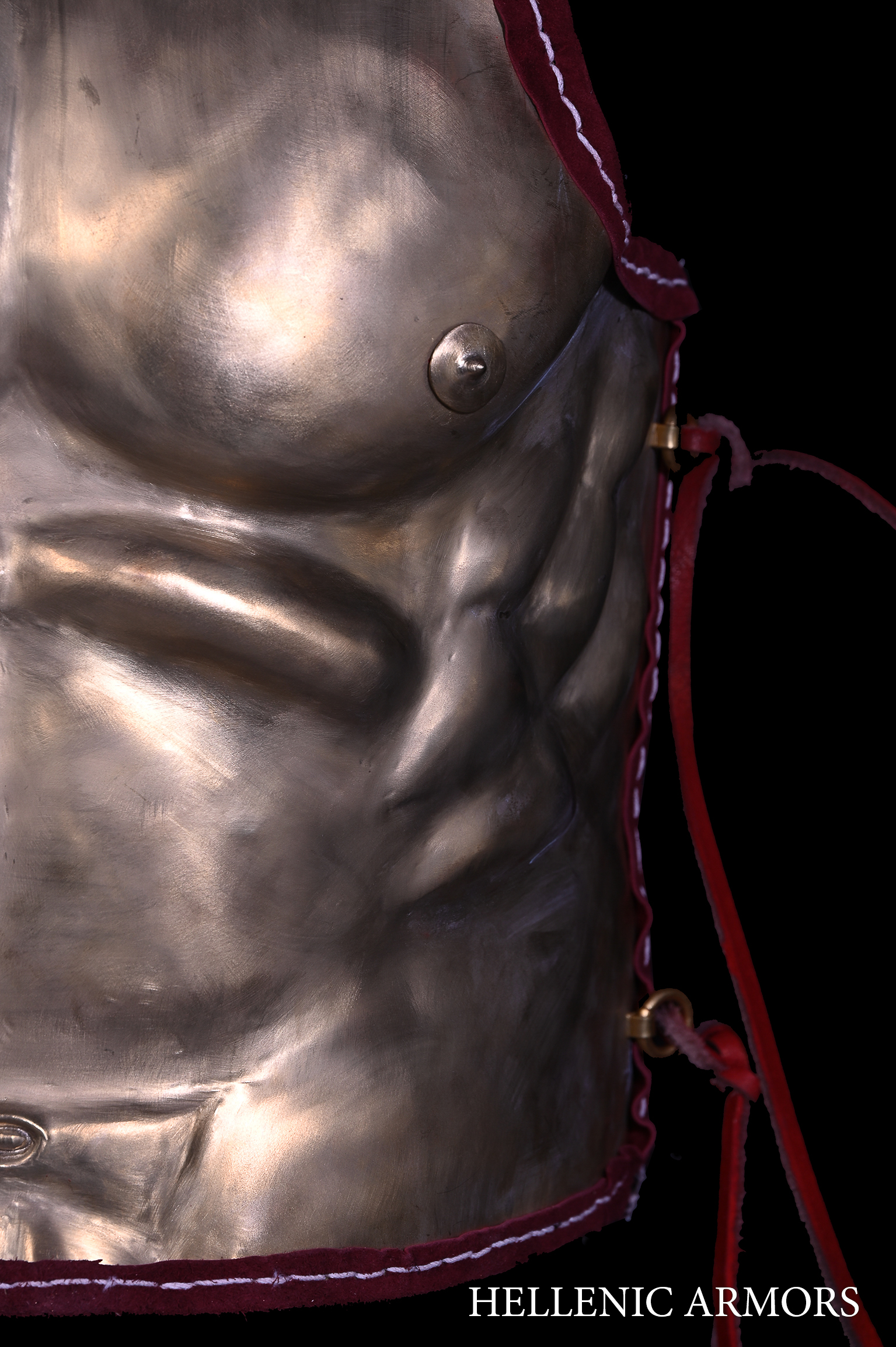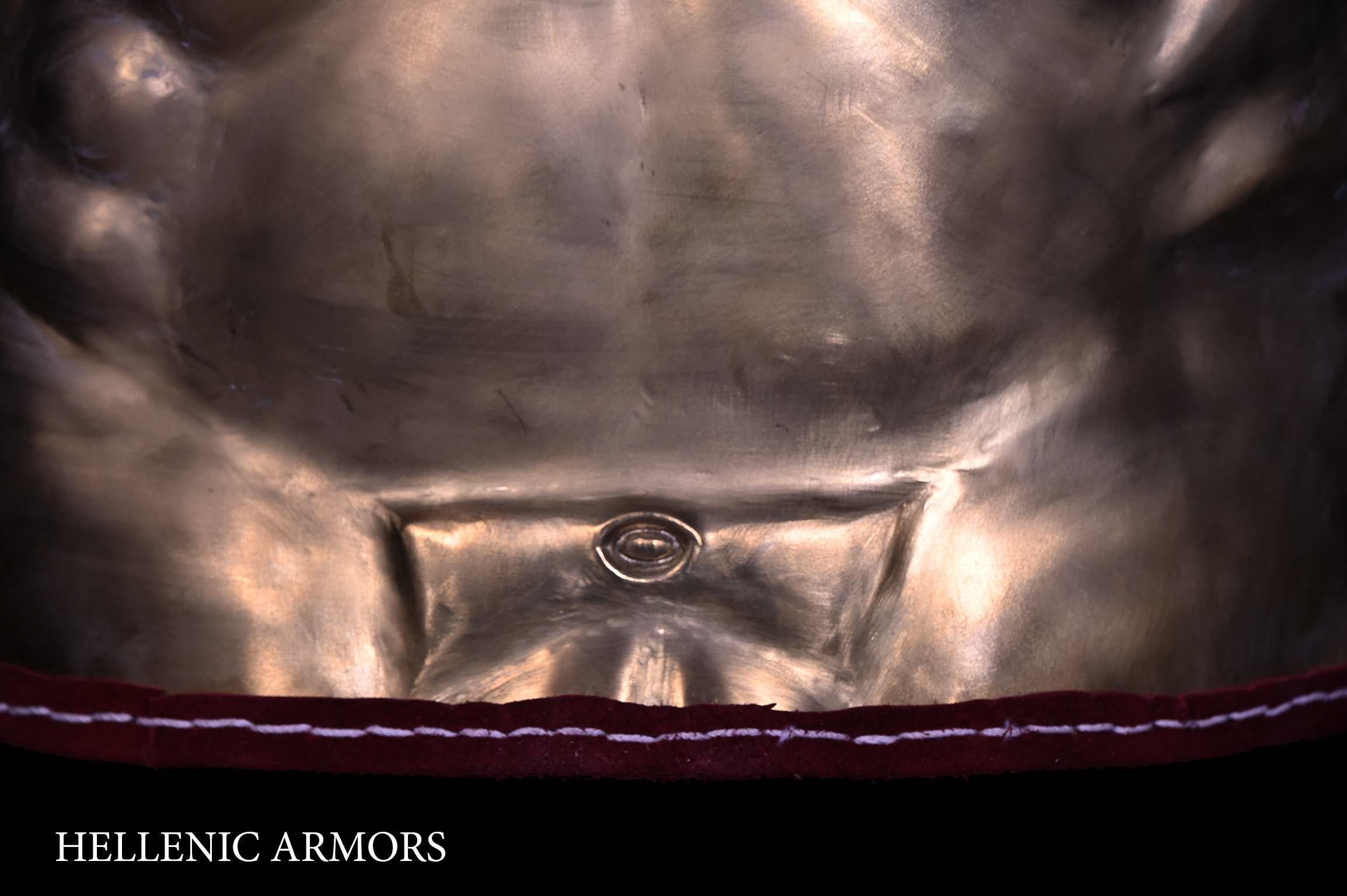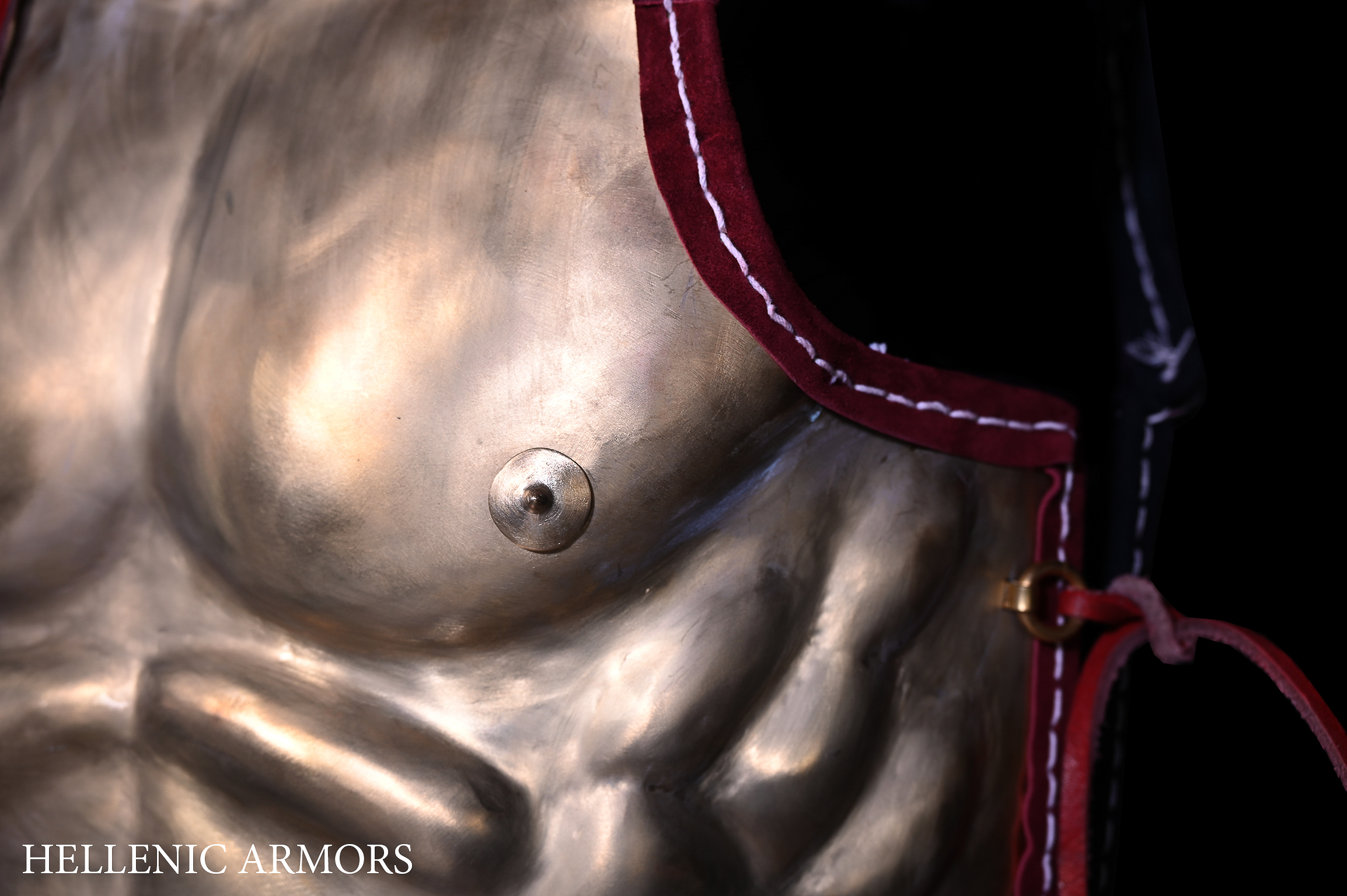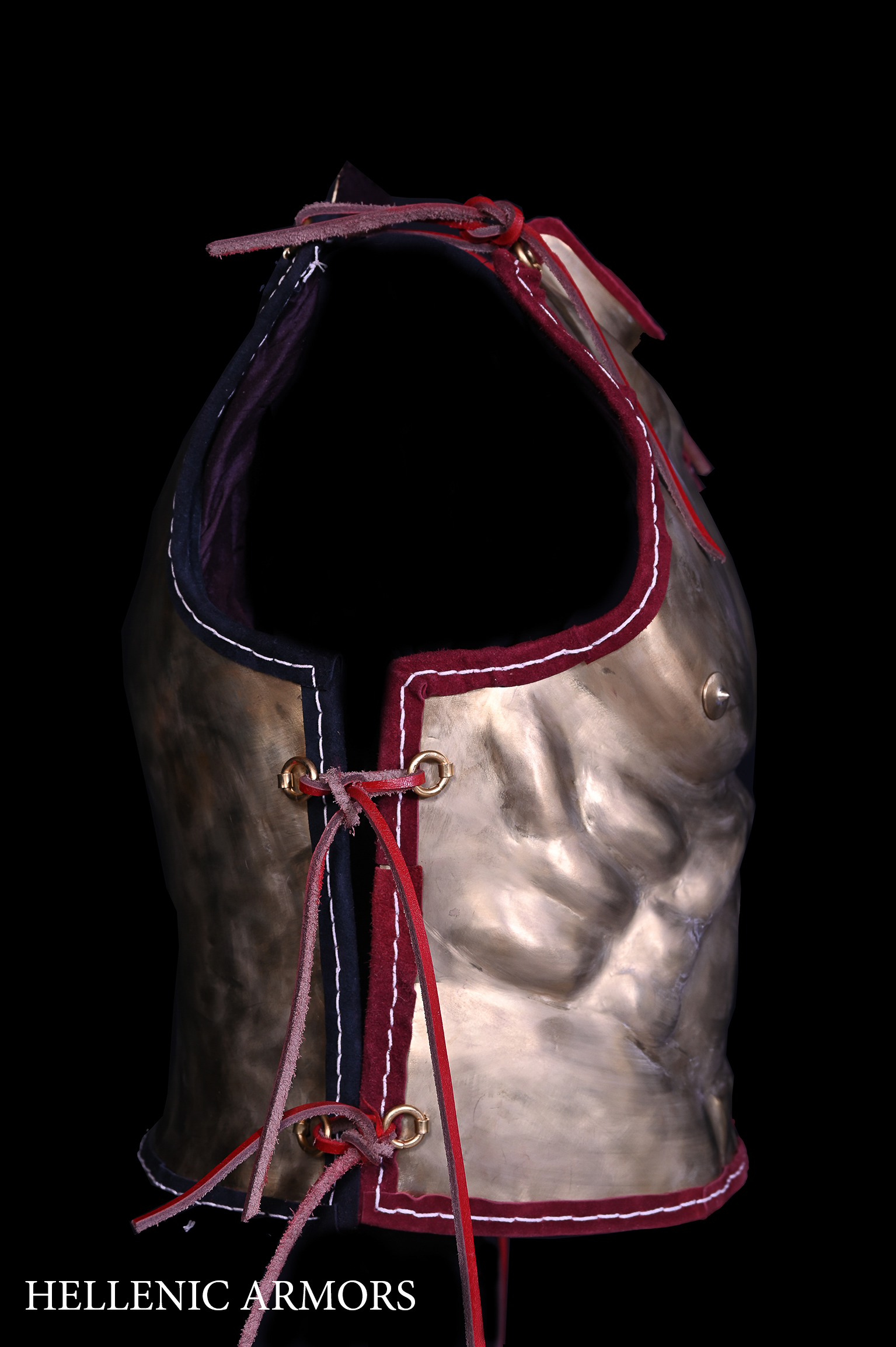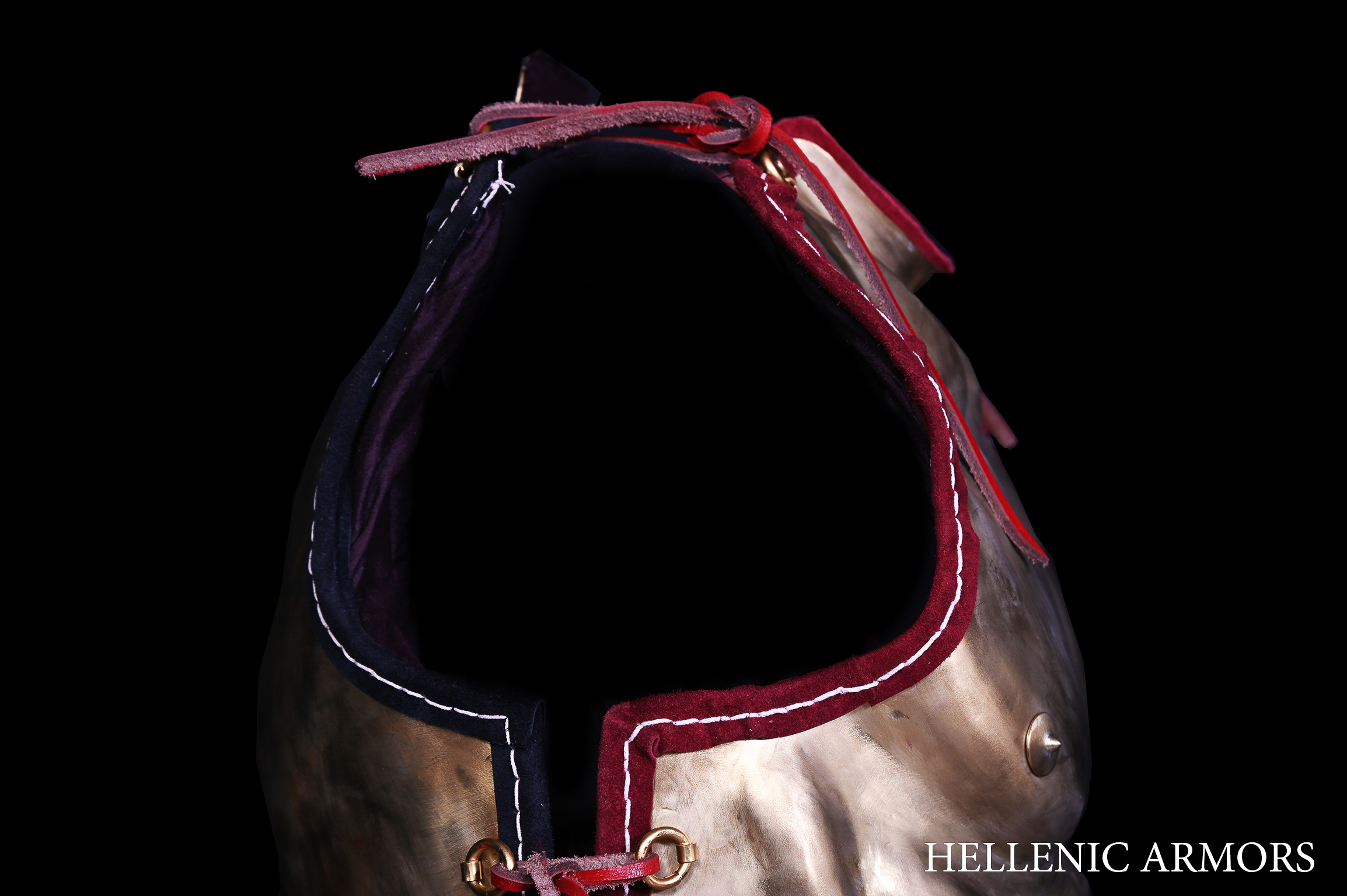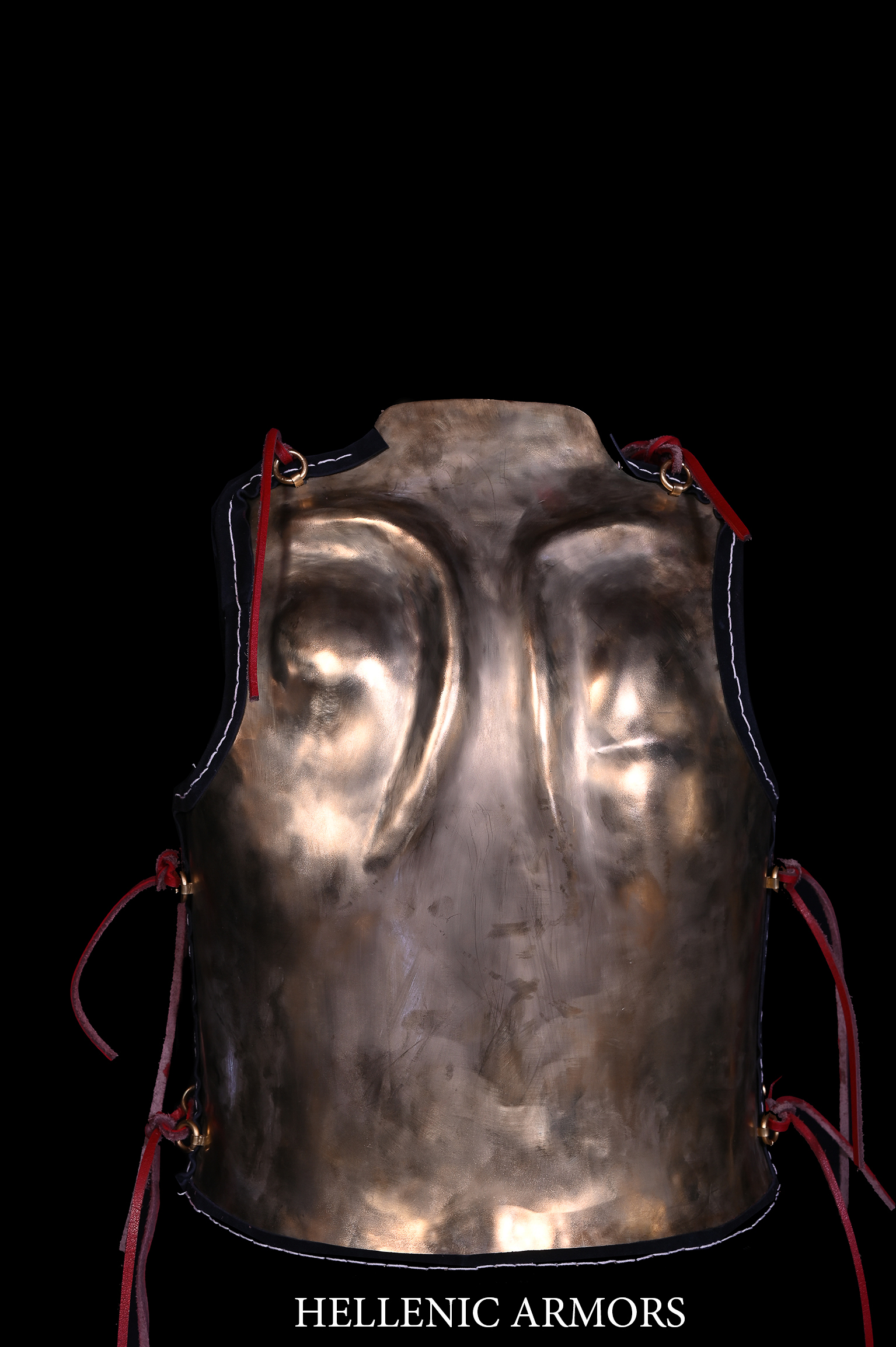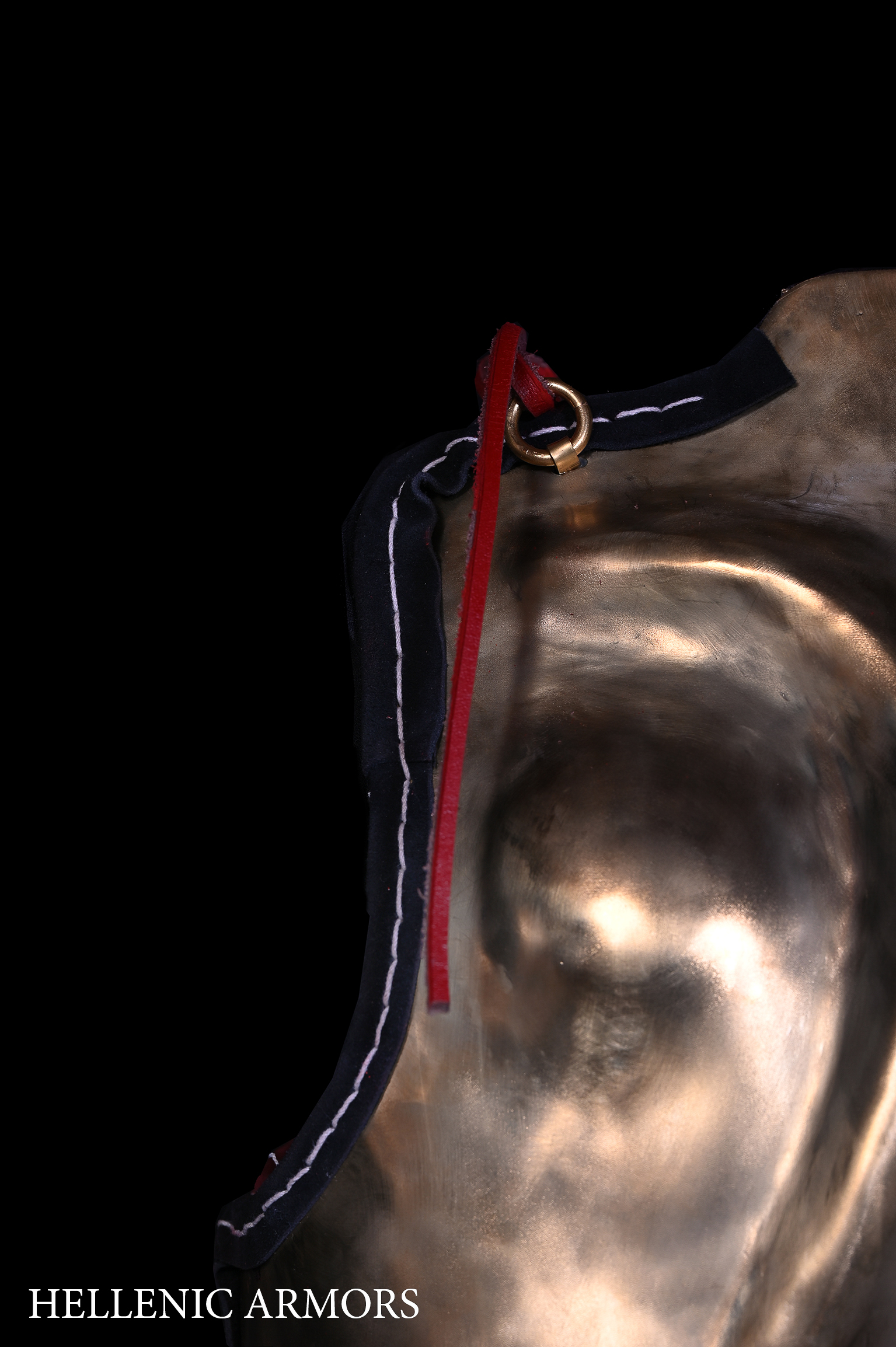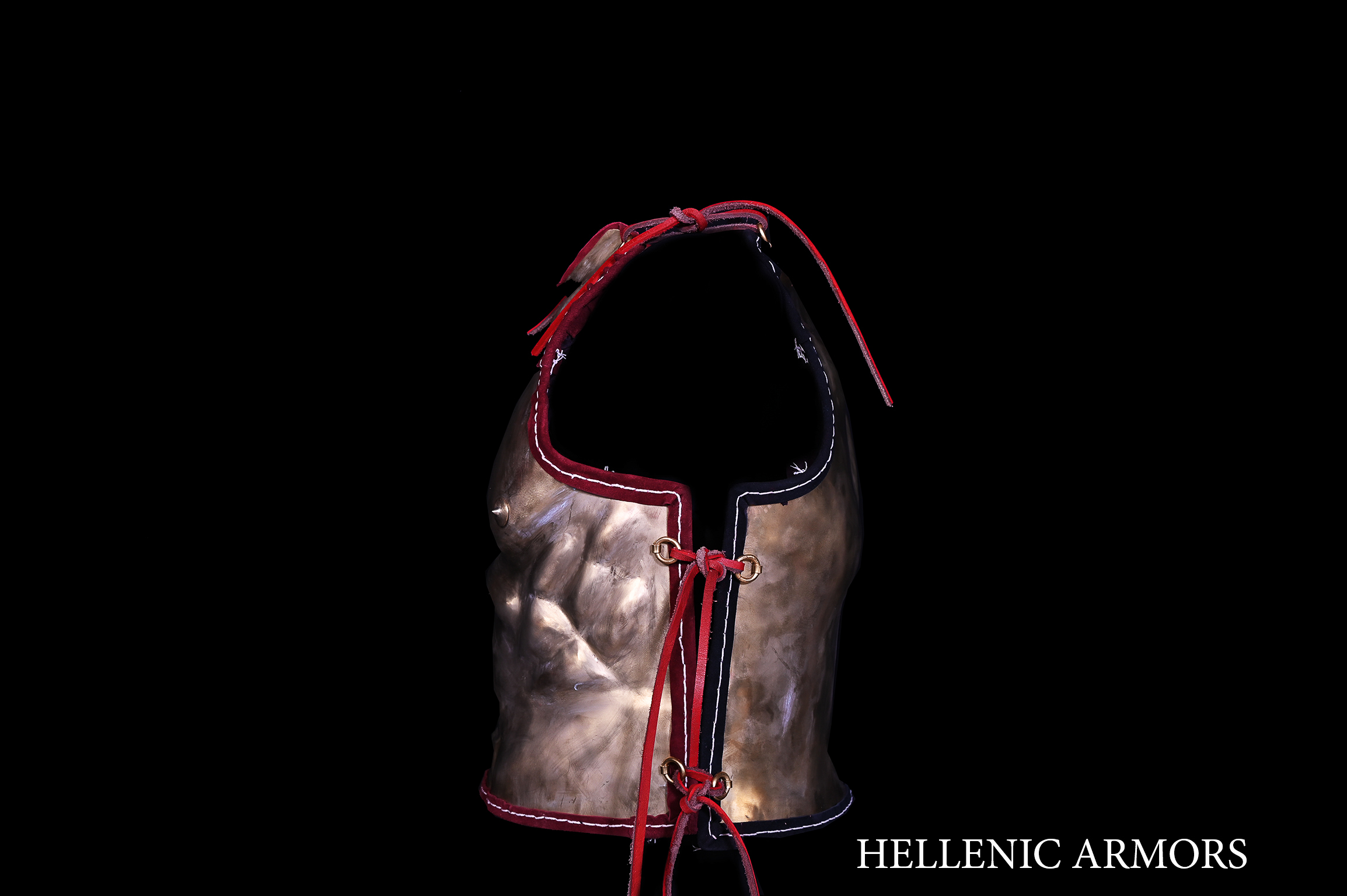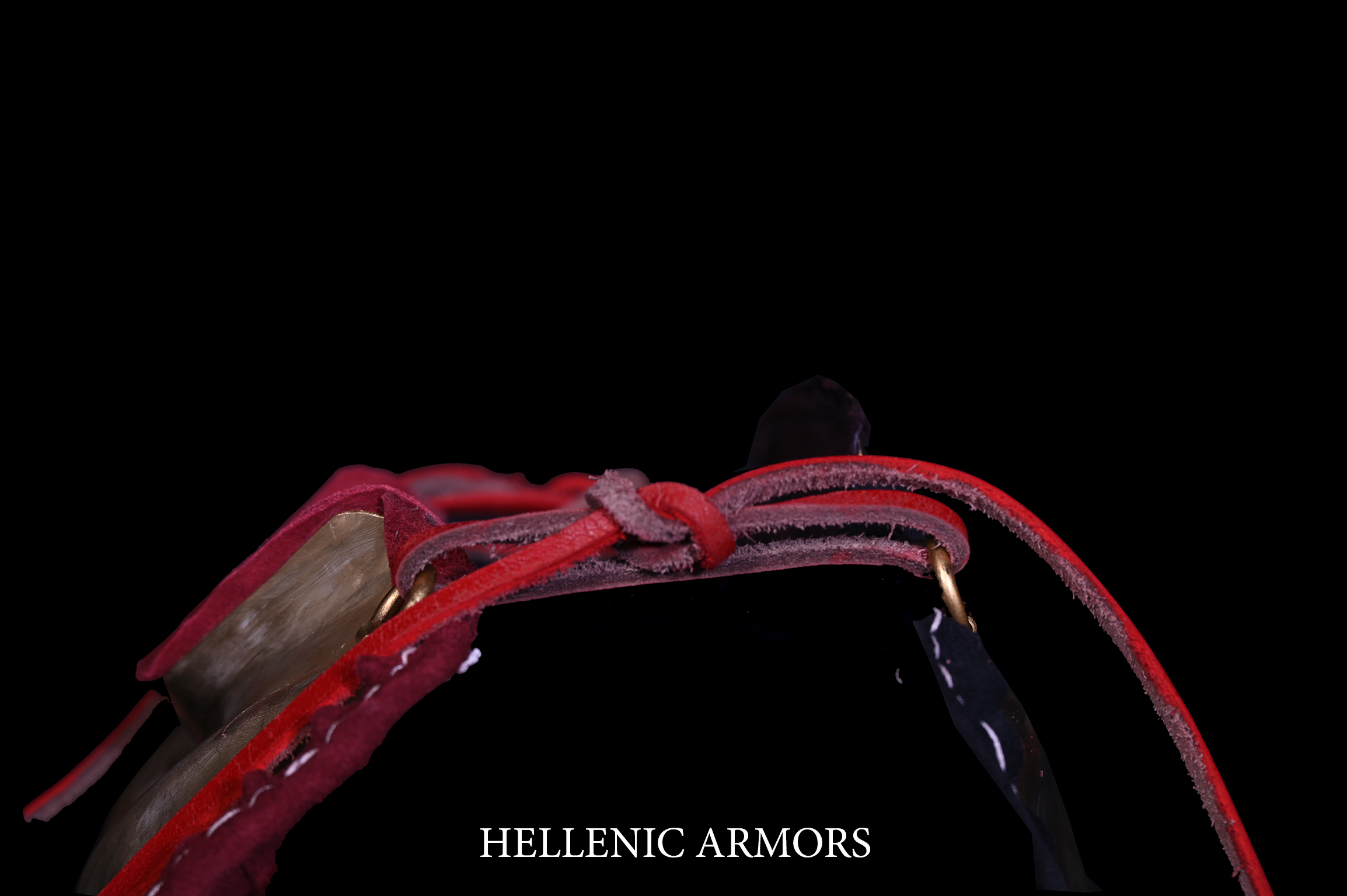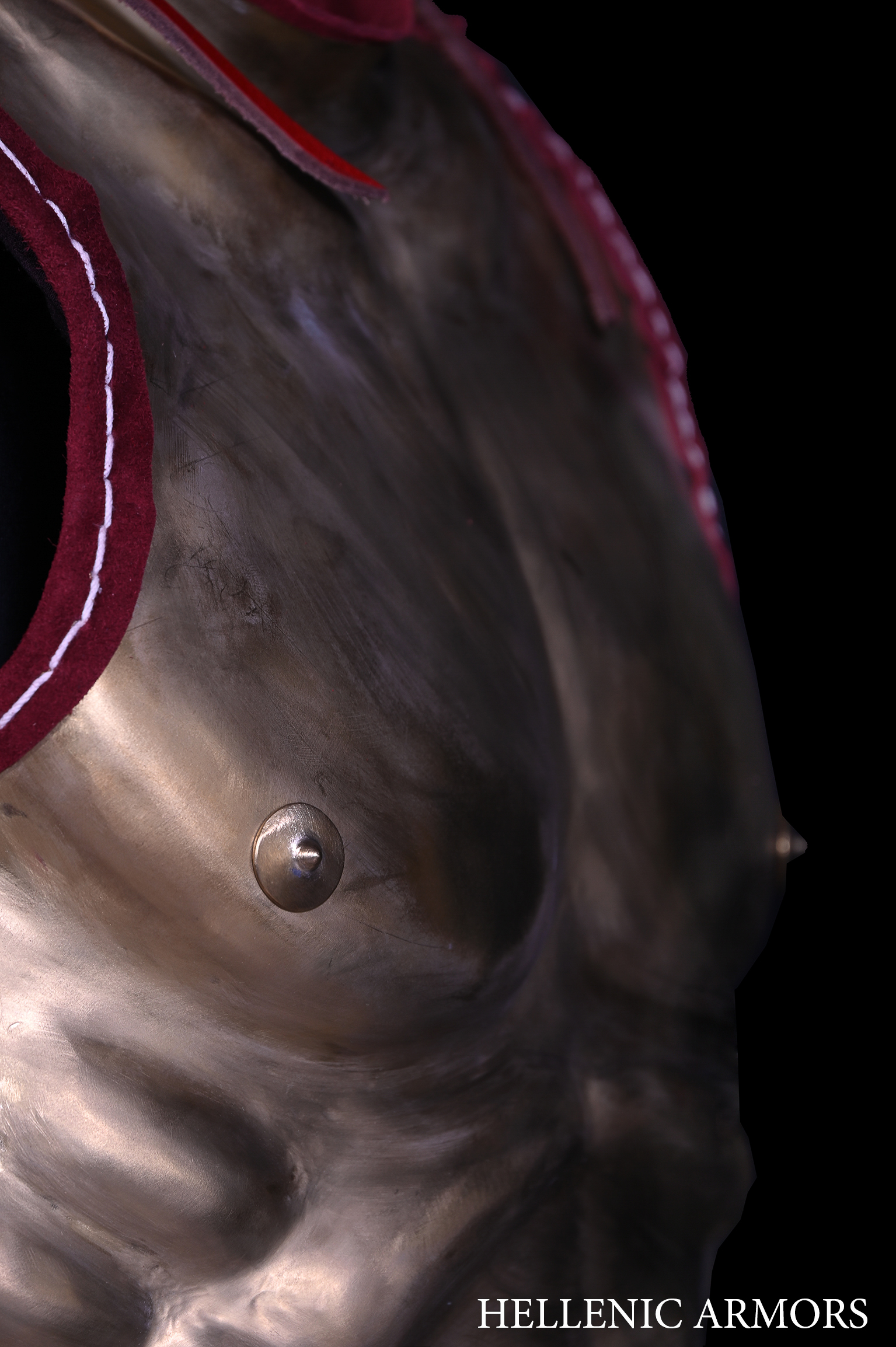Ancient Greek Armors
Short torso thorax from Apulia (“Magna Graecia”)
4th -3th century BC
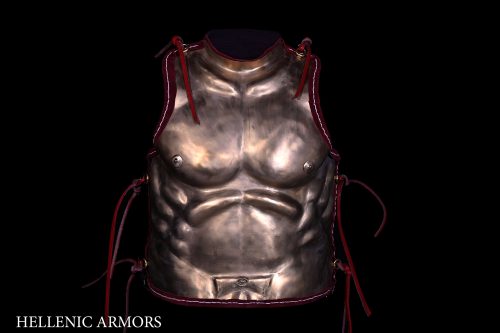
The numerous Greek colonies that flourished in Italy established what is known as the “Magna Graecia” (Greater Greece), modern day Sicily, Calabria, Apulia, and Salento. The bronze muscle cuirass typology, an indigenous Greek innovation, was introduced to the Latins, adopted and remained in use many centuries.
Τhe thorax is a shortened version of the typical muscled bronze torso, consisted of a breast and a dorsal anatomical plate. Such types of protection remained popular among the militaryelites of the Latins for centuries.
Τhe reconstruction is based on this very example shown on the picture. The frontal and dorsal plates joined together by means of leather straps&rings (six pairs of ring fasteners in total) placed on the lateral sides and shoulder areas.
It bears a heavily athletic musculature, distinct pectoral muscles, abdominal muscles, collar bones, ribs and a characteristic raised neck defense which functioned as a collar throat guard. A pair of silver cast and inset nipples have been riveted directly on the chest further promoting its artistic individuality. In all ends of the plates, purple&brown leather have been folded and stitched directly to the bronze surface.The inner sides have been covered with wool and luxurious silk textile.
